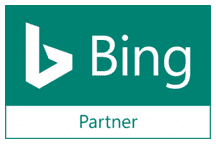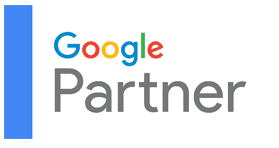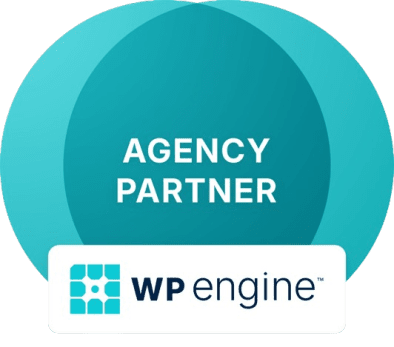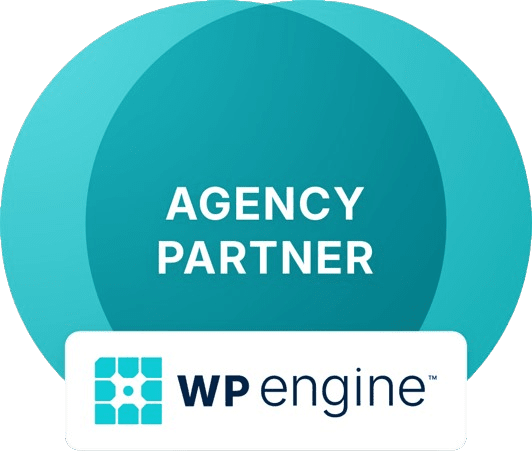What Is PPC Remarketing?
PPC remarketing, or Pay-Per-Click remarketing, is a digital marketing strategy that leverages targeted advertising to re-engage users who have previously interacted with a website or its content. It operates on the principle of tracking users’ online behaviour through cookies, which are small pieces of data stored on users’ browsers.
These cookies allow advertisers to identify users who have visited their website, viewed specific products, or taken certain actions, such as adding items to a shopping cart but not completing a purchase.

Once users are tagged with these cookies, they can be served with targeted ads as they continue to browse the internet, visit other websites, or use social media platforms. These ads can appear in various formats, including display ads, text ads, or video ads, depending on the advertising platform being used.
These remarketing campaigns typically involve creating customised ad creatives and messaging tailored to the interests and behaviours of the targeted audience. For example, if a user visited a travel website and looked at flights to a particular destination but did not book a ticket, the website could use remarketing to display ads promoting travel deals or discounts for flights to that destination when the user visits other websites or social media platforms.
Overall, pay-per-click remarketing is a powerful tool for increasing brand visibility, driving conversions, and maximising the impact of digital advertising campaigns by reaching users at various stages of the customer journey with relevant and timely messaging.
How PPC Remarketing Works And Why You Should Use It?
This works by leveraging the data collected from visitors to an advertiser’s website.
The process unfolds as follows: An individual visits the advertiser’s website, prompting the placement of a remarketing cookie on their browser. This cookie collects data about the visitor’s behaviour, such as the pages they viewed or the products they added to their shopping cart.
When the visitor later browses other websites that are part of the advertising network, the cookie allows the advertiser to recognise them and display relevant ads tailored to their previous interactions.
There are several compelling reasons why advertisers should incorporate remarketing into their marketing strategies:
Increased likelihood of conversion: Remarketing ads target individuals who have already expressed interest in the advertiser’s products or services, making them more likely to convert than cold prospects.
Personalised ad experiences: By tailoring ads based on previous browsing behaviour, remarketing campaigns deliver highly relevant and personalised ad experiences, enhancing engagement and click-through rates.
Reinforced brand awareness: Remarketing ads keep the advertiser’s brand and offerings top-of-mind for potential customers, increasing the chances of future conversions.
Cost-effective advertising: Remarketing campaigns often have lower costs per click (CPC) compared to traditional PPC campaigns, as they target a pre-qualified audience.
Advanced segmentation and targeting: Advertisers can segment their remarketing audiences based on various criteria, such as pages visited, products viewed, or cart abandonment, enabling highly targeted ad messaging and optimised strategies.
By leveraging the power of pay-per-click remarketing, advertisers can effectively re-engage with potential customers, maximise their advertising efforts, and drive higher conversions while delivering personalised and relevant ad experiences.

Different Types Of PPC Remarketing
There are several types of remarketing strategies advertisers can employ, each with its advantages and use cases.
Standard Remarketing – This is the most common type of remarketing strategy. It involves targeting users who have previously visited an advertiser’s website. The cookie dropped on the visitor’s browser enables the advertiser to display relevant ads to them as they browse other websites within the ad network.
Advertisers can create different audience lists based on the specific pages visited or actions taken on their site. For instance, one list could target visitors who viewed product pages, while another targets those who initiated the checkout process.
Dynamic Remarketing – This advanced remarketing technique takes personalisation to the next level. Dynamic remarketing allows advertisers to display ads featuring the exact products or services a visitor previously viewed or added to their cart. The ads dynamically update to showcase these specific items, creating a highly tailored and relevant ad experience.
Video Remarketing – As the name suggests, video remarketing targets users who have interacted with an advertiser’s video content. Video remarketing enables advertisers to capitalise on the interest generated by their video content and deliver targeted ads to viewers, encouraging further engagement or conversions.
Customer List Remarketing – This remarketing strategy involves uploading an existing customer database or email list to the advertising platform. The platform then matches the provided data with user profiles, enabling advertisers to display ads to their existing customers or leads. Customer list remarketing is an effective way to upsell, cross-sell, or promote new products or services to an audience that has already shown interest in the brand.
By understanding and leveraging the various types of pay-per-click remarketing, advertisers can create highly personalised and effective campaigns that resonate with their target audiences, ultimately driving better engagement, conversions, and return on investment.
Benefits Of PPC Remarketing
Remarketing pay-per-click ads offers numerous benefits to advertisers. It increases brand awareness and keeps the advertiser’s offerings top-of-mind for potential customers who have already shown interest.
By displaying targeted ads to these individuals as they browse other websites, remarketing campaigns help reinforce the advertiser’s brand and maintain a presence in the minds of potential buyers.
Furthermore, remarketing ads are highly targeted, resulting in better conversion rates and a higher return on investment (ROI) than traditional PPC campaigns. Since these ads are shown to individuals who have previously engaged with the advertiser’s website or products, they are more likely to resonate with the audience and drive desired actions, such as completing a purchase or signing up for a service.
Such remarketing campaigns can be segmented based on visitor behaviour, allowing for personalised ad messaging and increasing relevance. Advertisers can create different audience segments based on factors like pages visited, products viewed, or cart abandonment, and tailor their ad content and offers accordingly. This level of personalisation enhances the effectiveness of the ads and improves the overall user experience.
Additionally, they are cost-effective, as they target a pre-qualified audience who is more likely to convert. By focusing on individuals who have already expressed interest, advertisers can maximise their advertising budget and achieve a higher return on investment compared to targeting cold leads.
In addition to driving conversions, remarketing campaigns can also be leveraged for customer retention and loyalty. Promoting new products, offering special discounts, or encouraging repeat business are all ways advertisers can foster long-term customer relationships by staying top-of-mind with existing customers.
Overall, the benefits of remarketing a PPC campaign are numerous, including increased brand awareness, higher conversion rates, personalised ad experiences, cost-effectiveness, customer retention, and valuable audience insights, making it an essential component of any successful digital marketing strategy.
How Much Does PPC Remarketing Cost?
The cost of remarketing PPC campaigns varies depending on several factors, such as the industry, competition level, and ad network used. However, remarketing campaigns typically have lower costs per click (CPC) compared to regular PPC campaigns, as they target a pre-qualified audience who has already expressed interest in the advertiser’s products or services.
Depending on the level of competition for the targeted keywords or audiences, the advertiser’s bid amount determines what the actual cost will be. In highly competitive industries or for popular search terms, the cost per click tends to be higher due to the increased demand for ad placements.
Ad creativity, targeting options, and bid strategies can be adjusted to optimise the costs. For instance, more granular audience segmentation and tailored ad messaging can improve click-through rates and conversions, ultimately reducing the overall cost per conversion.
It’s worth noting that remarketing costs can vary across different ad networks and platforms. Popular networks like Google Ads and Facebook Ads offer robust remarketing capabilities and may have different pricing models or bidding strategies.
Depending on the campaign objectives, remarketing costs can be influenced by factors such as ad format (text, image, video), device targeting (desktop, mobile, tablet), and campaign objectives (e.g., sales, leads, or website traffic).
To maximise the return on investment (ROI) from remarketing campaigns, advertisers should closely monitor performance metrics, test different strategies, and continuously optimise their campaigns based on data-driven insights. By doing so, they can effectively manage costs while achieving their desired marketing goals.
Ways To Make PPC Remarketing Campaigns Work For You
To maximise the effectiveness of remarketing PPC campaigns, advertisers should follow best practices. Segmenting audiences based on their behaviour and interests is crucial and can work out well. By creating granular audience lists based on factors such as pages visited, products viewed, or cart abandonment, advertisers can deliver highly relevant ads that resonate with each segment.
Ad creative should be compelling and relevant, resonating with the specific audience segment. Advertisers should craft ad copy and visuals that align with the interests and needs of the remarketing audience, highlighting products or offers that directly relate to their previous interactions with the brand.
For optimal performance, advertisers should continually test and optimise their campaigns. This includes adjusting targeting, bids, and creativity. A/B testing different ad variations, experimenting with bid strategies, and refining audience segments based on performance data can help identify the most effective approaches.
Integrating remarketing campaigns with other marketing channels, such as email and social media, can create a cohesive customer experience and increase conversions.
Setting clear goals and tracking the right metrics is essential for measuring the success of remarketing campaigns and making data-driven optimisations. Advertisers should monitor key performance indicators (KPIs) such as click-through rates, conversion rates, cost per acquisition, and return on ad spend to assess the effectiveness of their campaigns and make informed decisions.
Another crucial aspect is managing frequency capping and ad fatigue. Remarketing ads should be displayed at an optimal frequency to avoid overwhelming or annoying the audience.
Finally, leveraging advanced remarketing features, such as dynamic or customer list remarketing, can further enhance the effectiveness of campaigns by delivering highly personalised and targeted ad experiences.
By following these best practices, advertisers can create remarketing campaigns that effectively re-engage potential customers, drive conversions, and maximise their return on investment cost-effectively and strategically.
Get Started With PPC Remarketing With Reposition
With a team of experienced professionals and a data-driven approach, Reposition can develop and execute highly effective remarketing campaigns tailored to each client’s unique needs and goals.
Businesses can benefit from expert guidance and strategic campaign planning. Our remarketing specialists conduct thorough research and analysis to understand the client’s target audience, industry landscape, and competitive environment. This insight forms the foundation for creating targeted remarketing campaigns that resonate with the right audience segments.
Reposition’s team crafts compelling ads with visually appealing designs to capture the attention of potential customers. We employ advanced audience segmentation techniques to ensure that the right ad messaging reaches the appropriate audience based on their browsing behaviour and interests.
Furthermore, we implement continuous campaign optimisation and testing to maximise the return on investment (ROI) for their clients and closely monitor key performance metrics and leverage data-driven insights to refine targeting, adjust bids, and iterate on ad creative, ensuring that the campaigns remain effective and cost-efficient.
This holistic approach enables us to create integrated campaigns that deliver a seamless and consistent brand experience across multiple touchpoints, amplifying the impact of remarketing efforts.
By partnering with Reposition, businesses can benefit from the agency’s expertise, strategic approach, and ongoing optimisation, enabling them to achieve remarkable results in their remarketing efforts and drive sustainable growth for their online presence.

 Organic
Organic  Digital Advertising
Digital Advertising  Resources
Resources  Content Marketing
Content Marketing  Resources
Resources  Who We Are
Who We Are 




